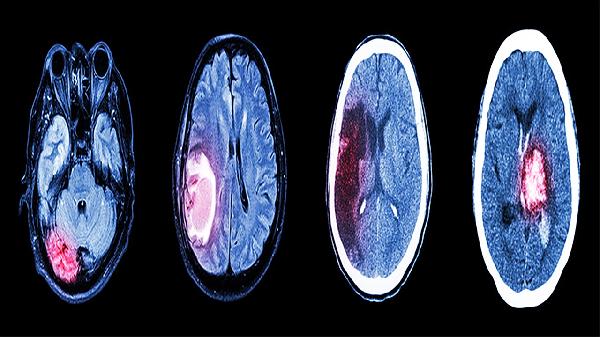The fawn response is one of those sneaky survival mechanisms that doesn’t always get the spotlight it deserves. While fight, flight, and freeze are pretty straightforward—your body either gears up to throw down, bolts for the nearest exit, or locks up like a deer in headlights—fawning is more subtle. It’s the people-pleasing, caretaking, "let me make sure you’re happy so I don’t get hurt" reaction. And honestly? It’s exhausting. If you’ve ever found yourself bending over backward to keep someone else comfortable while ignoring your own needs, you might be familiar with this trauma response. But here’s the thing: fawning isn’t just about being "nice." It’s a deeply ingrained survival tactic, often rooted in childhood, that can leave you feeling drained, resentful, and disconnected from yourself. So let’s break it down—what fawning really is, how to spot it, and most importantly, how to start untangling yourself from it.
Why the Fawn Response Happens
Fawning isn’t random—it’s a learned behavior, usually developed as a way to stay safe in unstable or threatening environments. Think about it: if you’re a kid and your parent is volatile, angry, or emotionally unavailable, fighting back or running away isn’t really an option. So instead, you learn to appease. You become hyper-attuned to their moods, their needs, their triggers. You smooth things over before they escalate. You make yourself small, agreeable, indispensable. And over time, this becomes your default setting. Dr. Schwartz explains that fawning often stems from emotional neglect or abuse. Maybe you had a parent who was struggling with their own unresolved trauma, addiction, or mental illness. Maybe you were in a situation where outright defiance would’ve made things worse. So you adapted. You became the peacekeeper, the emotional caretaker, the one who could "fix" things by keeping everyone else happy. But here’s the catch: while fawning might’ve kept you safe back then, it doesn’t serve you the same way in adulthood. Instead, it can lead to chronic self-abandonment—ignoring your own emotions, needs, and boundaries in favor of others’. And that? That’s a fast track to burnout, resentment, and even physical health issues.
Spotting the Signs of Fawning
Fawning can be tricky to recognize because, on the surface, it looks like being "helpful" or "selfless." But there’s a difference between genuine kindness and fawning. Here are some red flags: Sound familiar? If so, you’re not alone. Fawning is super common, especially among those who grew up in chaotic or emotionally unsafe environments. The good news? You can unlearn it.
How to Break the Fawn Response Cycle
Changing a deeply ingrained survival mechanism isn’t easy, but it is possible. Here’s where to start: 1. Get curious about your patterns. The first step is awareness. Start noticing when you slip into people-pleasing mode. Do you automatically agree to things you don’t want to do? Do you downplay your own feelings to avoid conflict? Journaling can help you track these moments and identify triggers. 2. Practice saying no—in small doses. You don’t have to go from "yes machine" to "hardbound warrior" overnight. Start with low-stakes situations. Maybe it’s turning down an extra task at work or skipping a social event when you’re tired. Each time you honor your own limits, you reinforce the idea that your needs matter. 3. Reconnect with your emotions. Fawning often means numbing out your own feelings. Try checking in with yourself throughout the day: What am I feeling right now? What do I need? If that feels overwhelming, therapy can be a game-changer for rebuilding that emotional awareness. 4. Set boundaries (yes, really). This is where most fawners get stuck. Boundaries feel "mean" or "selfish," but they’re actually the foundation of healthy relationships. Start small: "I can’t talk right now, I need some space." Or, "I’m not comfortable with that." 5. Get comfortable with discomfort. Fawning is all about avoiding conflict, so standing up for yourself will feel weird at first. You might feel guilty, anxious, or even like you’re "doing it wrong." That’s normal. Remind yourself that discomfort doesn’t mean you’re making a mistake—it just means you’re trying something new. 6. Seek support. You don’t have to do this alone. A therapist can help you unpack the roots of your fawning response and develop healthier coping strategies. Support groups or even trusted friends can also be great sounding boards as you practice setting boundaries.
The Long Game: Reclaiming Yourself
Breaking free from fawning isn’t about becoming selfish—it’s about becoming whole. For years, you’ve been operating on autopilot, prioritizing others at the expense of yourself. But here’s the truth: you deserve to take up space. You deserve to have needs. You deserve to say no without guilt. This work takes time. There will be days when you slip back into old habits, and that’s okay. Healing isn’t linear. But every time you choose yourself—every time you honor your feelings, set a boundary, or simply pause to ask what do I need right now?—you’re rewriting the script. So be patient with yourself. Celebrate the small wins. And remember: you’re not just unlearning a trauma response. You’re rediscovering you.
























